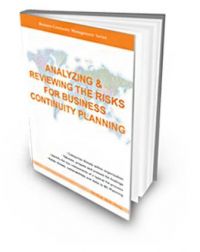Risk Likelihood: Difference between revisions
No edit summary |
(No difference)
|
Latest revision as of 13:44, 10 September 2022
1. Risk Likelihood is the state of being probable or chance of a threat occurring.
 Related Terms: Risk, Risk Appetite, Risk Impact, Risk Rating, Risk Assessment, Risk Level, Period of Disruption Notes (1): General descriptor - "Very High", "High", "Medium", "Low", "Very Low".

| ||||||||||||||||||||||
2. Chance of something happening.

Notes (1) : In risk management terminology, the word “likelihood” is used to refer to the chance of something happening, whether defined, measured or determined objectively or subjectively, qualitatively or quantitatively, and described using general terms or mathematically (such as a probability or a frequency over a given time period).
Notes (2) : The English term “likelihood” does not have a direct equivalent in some languages; instead, the equivalent of the term “probability” is often used. However, in English, “probability” is often narrowly interpreted as a mathematical term. Therefore, in risk management terminology, “likelihood” is used with the intent that it should have the same broad interpretation as the term “probability” has in many languages other than English.
[ISO Guide 73:2009, definition 3.6.1.1]
(Source: ISO 31000:2009 – Risk Management — Principles and Guidelines) - clause 2.19
3. Chance of something happening, whether defined, measured or estimated objectively or subjectively, or in term of general descriptors (such as rare, unlikely, likely, almost certain), frequencies or mathematical probabilities.
(Source: AE/HSC/NCEMA 7000:2021)
4. Chance of something happening, whether defined, measured or estimated objectively or subjectively, or in terms of general descriptors (such as rare, unlikely, likely, almost certain), frequencies or mathematical probabilities.
(Source: British Standard BS25999-1:2006 Code of Practice for Business Continuity Management)
5. Used as a general description of probability or frequency of an event occurring.
(Source: Australia. A Practitioner's Guide to Business Continuity Management HB292 - 2006 )
6. Chance of something happening.
NOTE: This Standard uses the word ‘likelihood’ to refer to the chance of something happening, whether defined, measured or determined objectively or subjectively, and described using general terms or mathematically (such as a probability or a frequency over a given time period).
(Source: AS/NZS 5050.1 Australian and New Zealand Standards for business continuity management.
Part 1: Business continuity management system specification)
